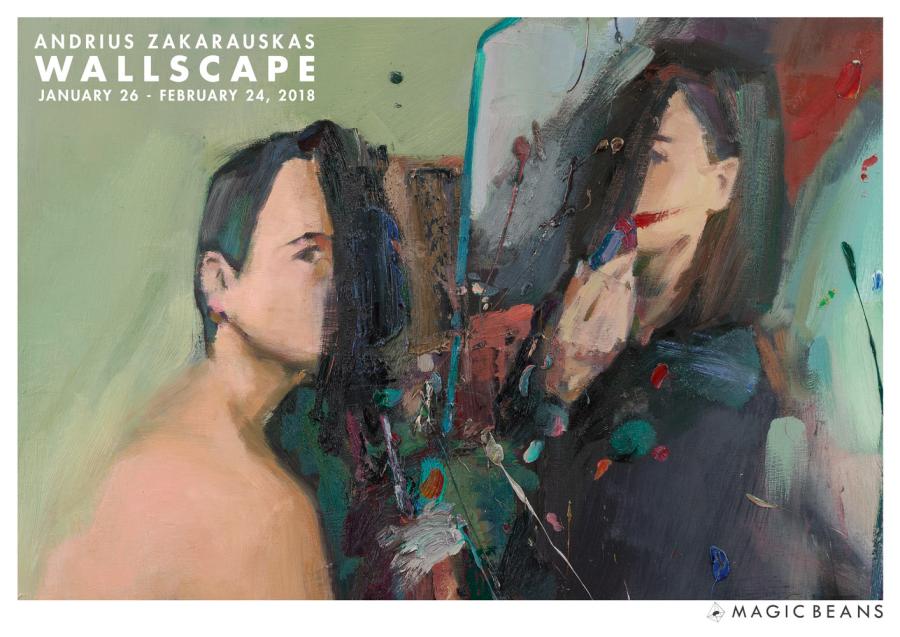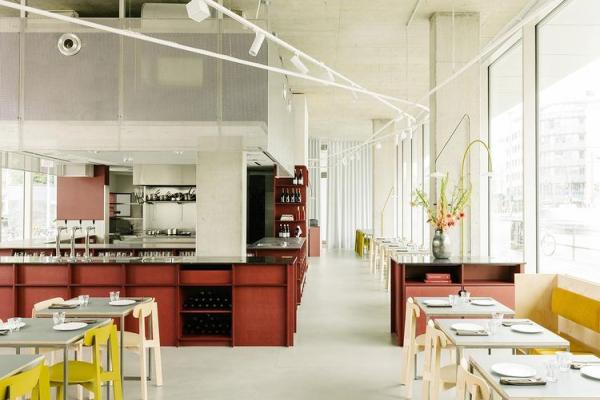Modern european cuisine
WALLSCAPE
Fri, 26 Jan 2018 18:00-21:00at Magic Beans
WALLSCAPE
A particular tension is characteristic of Zakarauskas´s work: although his painting is representational and figurative, what exactly is being portrayed is not concrete or clearly defined. The majority of Zakarauskas´s paintings usually feature self-portraits of the artist with his characteristic posture and even clothing style. Yet the figures are faceless, including even the artist´s muse.
The earlier paintings of Zakarauskas had a fantasy flavour, as grotesque animal masks covered by faces of characters. Now an anxious atmosphere is created in a different approach. The moderately marked figures seem ephemeral. People become shadows fluttering in space or blend with them, turning into dark smudges on the Earth´s surface. The self-portrait figure is mirrored or multiplied, until a formation or even a crowd appears. The intensity of reality and illusion is fuelled further by motives of painting within a painting. The artist portrays himself in a studio or a gallery, standing in front of his painted canvas. He is the author and the audience at the same time.
The painter aims to provoke the spectator by making them question his artworks: if the motives were animate or inanimate in nature, if the works themselves are motives, or whether it´s both. Blurring the line between reality and fiction is a central theme of Zakarauskas´s paintings. The colours chosen by the artist, as well as his painting style determines the vagueness of images and ideas. His dimmed monochrome palette is filled with nuanced matte grey and blue-grey tones, deep dark shades of black and brown. This gamut is brightened by little glowing accents of white, pink, teal, blue or light brown.
The artist aims for an eloquent contrast between deep dimension, achieved by glazing, and flat figures and objects, painted in expressive broad strokes. Another significant means of expression in Zakarauskas´ paintings is fragmented motives such as interior “framing”, zooming in on and enlarging the chosen details. Some fragments are enhanced cinematographically, others are almost fused with the surroundings by using particular painting tools. As Zakarauskas says: “First, I ask what painting is… The paint is the main thing. The paint, the canvas, me as the painter. Then I ask the same question again, with every new painting. I never answer it completely, but the question is usually enough. Perhaps I answer with my result. Well, what painting is… To me, I am painting myself”.
Zakarauskas erases the line between himself and the painting. He portrays a state of confusion and uncertainty, when there is no point of reference, because a more specific direction is not crystal clear yet. However, this emptiness filled with melancholy and anxiety is pulsating with life and magic of painting.

